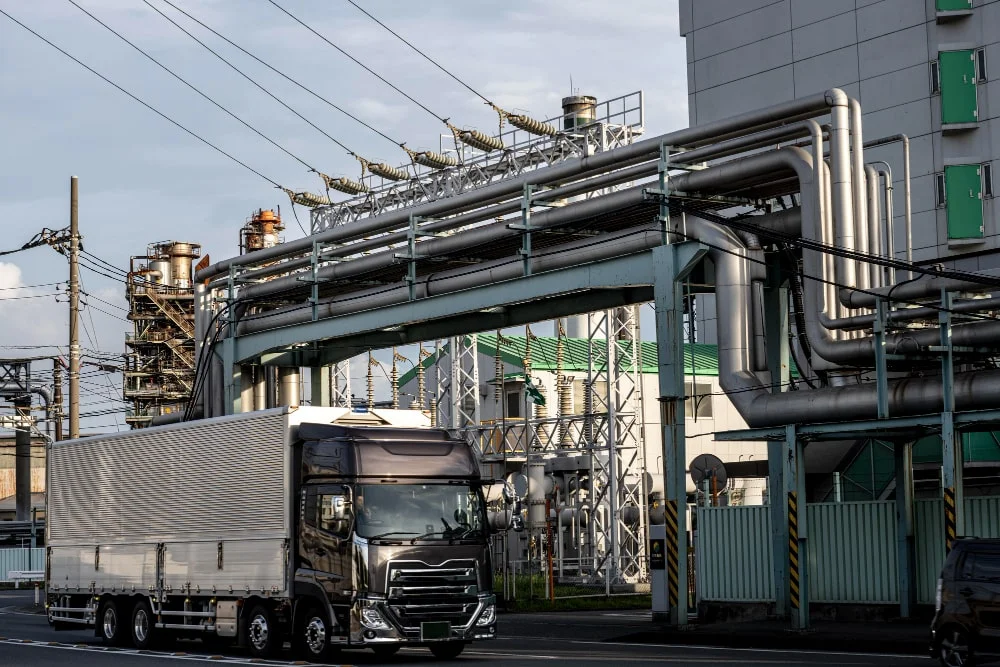In industrial operations, especially those involving hazardous environments, the importance of safety cannot be overstated. Environments, where chemicals, flammable materials, or other dangerous substances are handled, require equipment that minimizes the risk of leaks, contamination, and accidents. Among the various technological advancements that contribute to safer operations in such settings, magnetic drive pumps also known as mag-drive pumps stand out. These pumps offer significant safety enhancements over traditional mechanical pumps. Let’s understand the technology behind magnetic drive pumps, their advantages, and how they contribute to safer operations in hazardous environments.
Understanding Magnetic Drive Pumps
Magnetic drive pumps differ from conventional pumps primarily in their design and mechanism of action. Traditional pumps use a direct mechanical connection between the motor and the impeller, typically involving seals and shafts that penetrate the pump housing. This design, while effective, presents several risks, especially in handling hazardous substances.
Mag-drive pumps, on the other hand, employ a unique sealless design. They use magnetic couplings to transfer power from the motor to the impeller, eliminating the need for a direct mechanical connection. This design consists of two sets of magnets: an outer magnet attached to the motor shaft and an inner magnet connected to the impeller inside the pump housing. The magnetic field created between these two sets of magnets allows the impeller to rotate without any physical penetration of the pump casing.
Key Components of Magnetic Drive Pumps
Outer Magnet (Drive Magnet): Attached to the motor shaft, this magnet creates a magnetic field that drives the inner magnet.
Inner Magnet (Driven Magnet): Connected to the impeller, this magnet is rotated by the magnetic field created by the outer magnet.
Containment Shell: A non-magnetic barrier that separates the inner magnet from the outer magnet, ensuring a completely sealed pump housing.
Impeller: The component that moves the fluid through the pump.
Advantages of Magnetic Drive Pumps
The design and operational mechanism of magnetic drive pumps offer several advantages, particularly in enhancing safety and reliability in hazardous environments. These advantages include:
Leak Prevention
The primary advantage of magnetic drive pumps is their leak-proof design. Without shaft seals, the risk of fluid leakage is significantly reduced, enhancing workplace safety and environmental protection. In hazardous environments where even a minor leak can have catastrophic consequences, the sealless nature of mag-drive pumps provides peace of mind to operators and regulators alike.
Corrosion Resistance
Magnetic drive pumps are constructed from materials such as reinforced plastics, ceramics, alloyed steel and fluoropolymers, which offer exceptional corrosion resistance. This makes them suitable for handling aggressive chemicals, acids, and solvents without degradation or contamination. By choosing the right materials of construction, operators can ensure long-term reliability and compatibility with their specific process fluids.
Regulatory Compliance
In industries governed by stringent regulations such as chemical processing, pharmaceutical manufacturing, and wastewater treatment, compliance with safety and environmental standards is non-negotiable. Magnetic drive pumps help organizations meet regulatory requirements by minimizing the risk of spills, leaks, and emissions. Their sealless construction and leak-proof operation align with industry best practices and regulatory guidelines, ensuring a safe working environment and sustainable operations.
Enhancing Safety in Hazardous Environments
Hazardous environments, such as chemical processing plants, petrochemical facilities, and pharmaceutical manufacturing units, pose significant risks due to the nature of the substances handled. The use of magnetic drive pumps in these settings enhances safety in several ways:
Chemical Processing Plants
Chemical processing plants deal with a variety of corrosive and toxic chemicals. Leakage of these fluids can lead to severe health hazards, environmental contamination, and even catastrophic accidents. Mag-drive pumps, with their leak-free operation, ensure that these dangerous chemicals are safely contained within the system.
Petrochemical Facilities
In petrochemical facilities, the handling of flammable liquids and gases is routine. Traditional pumps with mechanical seals pose a significant risk of leaks, which can lead to fires or explosions. Magnetic drive pumps mitigate this risk by providing a completely sealed pumping mechanism, thereby enhancing safety. Additionally, their robust construction ensures reliable performance under the high-stress conditions typical in petrochemical operations.
Pharmaceutical Manufacturing
Pharmaceutical manufacturing requires the handling of various chemical compounds, some of which can be hazardous. Contamination or leaks can lead to product recalls, health risks, and regulatory violations. Mag-drive pumps ensure a high level of containment and purity, making them ideal for pharmaceutical applications where cleanliness and safety are paramount.
Technological Innovations in Magnetic Drive Pumps
The evolution of magnetic drive pump technology continues to enhance their safety and performance. Recent innovations include:
- Advanced Materials: The use of advanced materials such as high-performance polymers and ceramics in the construction of mag-drive pumps increases their resistance to corrosion and wear, further enhancing their durability and safety.
- Enhanced Magnetic Couplings: Improvements in magnetic coupling technology have led to stronger and more efficient magnetic fields, allowing mag-drive pumps to handle higher loads and temperatures.
- Smart Monitoring Systems: The integration of smart monitoring systems with mag-drive pumps enables real-time tracking of pump performance and early detection of potential issues, allowing for proactive maintenance and reducing the risk of unexpected failures.
- Modular Designs: Modular designs facilitate easier maintenance and repair, minimizing downtime and enhancing overall safety in hazardous environments.
Pump Curves in Relation to Magnetic Drive Pumps
In the context of enhancing safety in hazardous environments, understanding pump performance characteristics is crucial. One of the essential tools for assessing and optimizing pump performance is the pump curve. Pump curves provide vital information about a pump’s operational capabilities and are particularly relevant when evaluating magnetic drive pumps for hazardous applications.
Pump curves graphically represent the performance characteristics of a pump, such as flow rate, head (pressure), efficiency, power consumption, and Net Positive Suction Head Required (NPSHR). These curves are standardized and provide a clear picture of how a pump will perform under various operating conditions.
Relevance of Pump Curves to Magnetic Drive Pumps
Magnetic drive pumps, with their unique design and operational mechanisms, must be carefully selected and operated within their optimal performance ranges to maximize safety and efficiency. Pump curves play a crucial role in this process by providing the necessary performance data to make informed decisions.
Selection of the Right Pump: When choosing a magnetic drive pump for hazardous environments, the pump curves help in selecting a pump that meets the required flow rate and head while ensuring high efficiency. This selection process is vital to avoid underperformance or overloading, which could compromise safety.
Ensuring Efficient Operation: By analyzing the efficiency curve, operators can ensure that the mag-drive pump operates within its optimal efficiency range. This not only saves energy but also reduces wear and tear, minimizing the risk of failure in hazardous environments.
Preventing Cavitation: The NPSHR curve is particularly important for mag-drive pumps, as cavitation can lead to serious damage and operational hazards. By ensuring that the NPSH available (NPSHA) exceeds the NPSHR indicated on the pump curve, operators can prevent cavitation and maintain safe operation.
Motor and Power Management: Understanding the power consumption curve allows for the correct sizing of the motor and management of power resources. In hazardous environments, ensuring that the pump motor is neither underpowered nor overpowered is critical to maintaining safe and stable operations.
Conclusion
In conclusion, as we advance further into an era where safety and sustainability are paramount, magnetic drive pumps stand out as a key technology that not only meets but exceeds the demands of hazardous environments, ensuring safer and more efficient industrial processes.


Videos